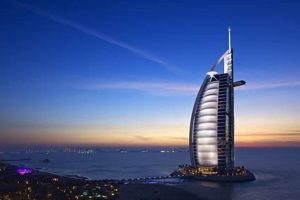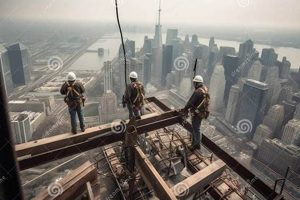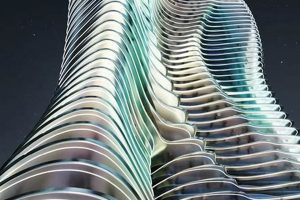China has a rapidly growing construction industry, and skyscrapers are becoming increasingly common in its major cities. As of 2023, China is home to more than 2,500 skyscrapers, more than any other country in the world. The tallest building in China is the Shanghai Tower, which stands at 632 meters tall.
There are a number of reasons for the boom in skyscraper construction in China. First, China’s economy has been growing rapidly in recent decades, and this has led to a surge in demand for commercial and residential space. Second, China’s government has encouraged the construction of skyscrapers as a way to symbolize the country’s growing economic power. Third, China has a number of talented architects and engineers who are able to design and build skyscrapers that are both innovative and structurally sound.
Skyscrapers have a number of benefits for China. First, they can help to save space in crowded cities. Second, they can provide businesses with access to a large number of potential customers. Third, they can be used to create iconic landmarks that can attract tourists.
1. Height
China’s rapidly growing construction industry has led to a boom in skyscraper construction in recent years. As of 2023, China is home to more than 2,500 skyscrapers, more than any other country in the world. The tallest building in China is the Shanghai Tower, which stands at 632 meters tall.
- Economic Power: The construction of skyscrapers is often seen as a sign of economic growth and prosperity. China’s rapidly growing economy has led to a surge in demand for commercial and residential space, which has fueled the construction of skyscrapers.
- Engineering Prowess: The construction of skyscrapers requires a high level of engineering expertise. Chinese engineers have developed new and innovative techniques for building skyscrapers that are both safe and efficient.
- Architectural Innovation: Skyscrapers in China are often designed by world-renowned architects. These architects have pushed the boundaries of architectural design, creating skyscrapers that are both beautiful and functional.
- Urban Planning: Skyscrapers can be used to help shape the urban landscape and create more livable cities. For example, skyscrapers can be used to create green spaces and public plazas at ground level.
The construction of skyscrapers in China is a testament to the country’s economic power, engineering prowess, and architectural innovation. Skyscrapers are not only symbols of China’s growing economic power but also important contributors to the country’s economy and society.
2. Design
The design of Chinese skyscrapers is a key factor in their success. Chinese architects have embraced innovative and sustainable design principles to create skyscrapers that are both beautiful and functional. World-renowned architects, such as Adrian Smith + Gordon Gill Architecture and KPF, have designed some of the most iconic skyscrapers in China.
- Innovative Design: Chinese skyscrapers are often designed with unique and innovative features. For example, the Shanghai Tower has a spiral-shaped design that reduces wind resistance and provides panoramic views of the city. The Guangzhou CTF Finance Centre has a sky garden on the 111th floor, which provides a green oasis in the heart of the city.
- Sustainable Design: Chinese skyscrapers are also designed with sustainability in mind. Many skyscrapers incorporate energy-efficient lighting, water-saving fixtures, and recycled materials. The Bank of China Tower in Beijing has a double-skin faade that helps to regulate the building’s temperature and reduce energy consumption.
- Mixed-Use Design: Many Chinese skyscrapers are mixed-use developments, combining residential, commercial, and retail space. This type of design helps to create vibrant and livable communities. For example, the Ping An Finance Center in Shenzhen includes offices, apartments, a shopping mall, and a hotel.
The design of Chinese skyscrapers is a testament to the country’s commitment to innovation and sustainability. Chinese architects are pushing the boundaries of architectural design to create skyscrapers that are both beautiful and functional. These skyscrapers are not only symbols of China’s economic power but also important contributors to the country’s economy and society.
3. Construction
The construction of skyscrapers is a complex and challenging undertaking that requires a high level of expertise and skill. Chinese construction companies have developed a number of innovative techniques and technologies that allow them to build skyscrapers quickly and efficiently.
- Precast concrete: Precast concrete is a type of concrete that is cast in a factory and then transported to the construction site. This method of construction can save time and money, and it also allows for greater quality control.
- Modular construction: Modular construction is a type of construction in which buildings are assembled from prefabricated modules. This method of construction can save time and money, and it also allows for greater flexibility in design.
- High-strength steel: High-strength steel is a type of steel that is stronger than traditional steel. This allows for the construction of taller and more slender skyscrapers.
- Advanced construction techniques: Chinese construction companies have also developed a number of advanced construction techniques, such as the use of drones and robots. These techniques can help to improve safety and efficiency.
The construction of skyscrapers in China is a testament to the country’s economic power, engineering prowess, and architectural innovation. Chinese construction companies are playing a leading role in the development of new and innovative construction techniques that are helping to shape the future of skyscraper construction.
4. Investment
The construction of skyscrapers in China is often seen as a sign of economic growth and prosperity. This is because skyscrapers are typically built in major cities, which are economic hubs. The presence of skyscrapers in a city can attract businesses and investment, and it can also boost tourism. In addition, the construction of skyscrapers can create jobs and stimulate the economy.
- Economic Hubs: Skyscrapers are typically built in ma
jor cities, which are economic hubs. This is because major cities offer a large pool of potential tenants and customers, as well as access to transportation and other infrastructure. The presence of skyscrapers in a city can help to attract businesses and investment, as it signals that the city is a desirable place to do business. - Job Creation: The construction of skyscrapers can create jobs in a variety of fields, including architecture, engineering, construction, and real estate. In addition, the operation and maintenance of skyscrapers can create jobs in property management, security, and cleaning. The construction of a single skyscraper can create thousands of jobs, and these jobs can help to boost the local economy.
- Tourism: Skyscrapers can be major tourist attractions. People from all over the world come to see iconic skyscrapers, such as the Shanghai Tower and the Burj Khalifa. Tourism can generate revenue for a city and help to support local businesses.
The construction of skyscrapers in China is a sign of the country’s economic growth and prosperity. Skyscrapers are not only symbols of economic power but also important contributors to the economy and society.
5. Tourism
China’s rapidly growing construction industry has led to a boom in skyscraper construction in recent years. These buildings are not only symbols of the country’s economic power but also important contributors to the country’s economy and society. One of the most important ways that skyscrapers contribute to the economy is through tourism.
Skyscrapers can be major tourist attractions, drawing visitors from all over the world. This is because skyscrapers offer unique and unforgettable experiences that cannot be found anywhere else. For example, visitors can ascend to the top of a skyscraper to enjoy panoramic views of the city below. They can also visit observation decks, which often offer interactive exhibits and educational displays. In addition, many skyscrapers house restaurants, bars, and other amenities that cater to tourists.
The tourism industry is a major source of revenue for China. In 2019, China received over 145 million international tourists, who spent a total of $254.6 billion. Skyscrapers play a significant role in attracting these tourists. For example, the Shanghai Tower is one of the most popular tourist attractions in China, drawing over 2 million visitors per year.
The construction of skyscrapers in China is a sign of the country’s economic growth and prosperity. Skyscrapers are not only symbols of economic power but also important contributors to the economy and society. Tourism is one of the most important ways that skyscrapers contribute to the economy, and it is a major source of revenue for China.
6. Sustainability
In China, the construction industry is rapidly growing, and skyscrapers are becoming increasingly common in major cities. The development of sustainable skyscrapers is a significant trend in China, as the country seeks to reduce its environmental impact and promote green building practices.
- Energy Efficiency: Many skyscrapers in China are equipped with energy-efficient lighting systems, such as LED lights, which consume less energy and have a longer lifespan than traditional lighting. Additionally, some skyscrapers use renewable energy sources, such as solar panels and wind turbines, to generate electricity.
- Water Conservation: Water-saving fixtures, such as low-flow toilets and faucets, are commonly used in Chinese skyscrapers. These fixtures can significantly reduce water consumption, which is especially important in water-scarce regions.
- Green Building Materials: Some skyscrapers in China are constructed using green building materials, such as recycled steel and sustainable wood. These materials have a lower environmental impact than traditional building materials, and they can contribute to the overall sustainability of a skyscraper.
- Green Roofs and Facades: Green roofs and facades are becoming increasingly popular in China. These features can help to reduce heat absorption and improve air quality, while also providing a natural habitat for wildlife.
The development of sustainable skyscrapers in China is a positive trend that can help to reduce the country’s environmental impact and promote green building practices. These skyscrapers are not only symbols of economic power but also important contributors to the country’s sustainability goals.
7. Mixed-use
Mixed-use skyscrapers are becoming increasingly common in China. This is due to a number of factors, including the country’s rapidly growing population, the increasing demand for urban living, and the government’s push for sustainable development. Mixed-use skyscrapers offer a number of advantages over traditional single-use buildings, including increased efficiency, convenience, and sustainability.
- Increased Efficiency: Mixed-use skyscrapers can be more efficient than traditional single-use buildings because they reduce the need for travel. For example, a mixed-use skyscraper might include residential units, office space, and retail space. This means that residents can live, work, and shop in the same building, which can save them time and money.
- Convenience: Mixed-use skyscrapers can be more convenient than traditional single-use buildings because they offer a variety of amenities and services in one location. For example, a mixed-use skyscraper might include a gym, a swimming pool, a restaurant, and a daycare center. This can make it easier for residents to live their lives without having to travel to different locations.
- Sustainability: Mixed-use skyscrapers can be more sustainable than traditional single-use buildings because they can reduce energy consumption and greenhouse gas emissions. For example, a mixed-use skyscraper might be designed to use natural light and ventilation, which can reduce the need for artificial lighting and heating and cooling systems.
The development of mixed-use skyscrapers in China is a positive trend that can help to reduce the country’s environmental impact and promote sustainable development. These skyscrapers are not only symbols of economic power but also important contributors to the country’s sustainability goals.
8. Urban planning
Skyscrapers are often seen as symbols of economic power and prosperity. However, they can also play an important role in urban planning and the creation of more livable cities.
One of the most important ways that skyscrapers can be used in urban planning is to create more efficient and sustainable cities. For example, mixed-use skyscrapers can combine residential, commercial, and retail space in a single building. This can reduce the need for travel and can help to create more vibrant and walkable neighborhoods.
Skyscrapers can also be used to create
green spaces and public plazas at ground level. This can help to improve the quality of life for residents and can make cities more attractive to visitors.
In China, skyscrapers are playing an increasingly important role in urban planning. For example, the Shanghai Tower is not only the tallest building in China but also includes a number of green features, such as a rainwater collection system and a wind turbine. The building is also designed to withstand typhoons and earthquakes.
The Ping An Finance Center in Shenzhen is another example of a skyscraper that is being used to create a more livable city. The building includes a number of public amenities, such as a sky garden, a museum, and a library. The building is also designed to be energy-efficient and sustainable.
The use of skyscrapers in urban planning is a complex and challenging undertaking. However, it is one that can have a significant impact on the quality of life for residents and visitors alike.
FAQs about China Skyscrapers
Skyscrapers have become a defining feature of China’s major cities, symbolizing the country’s economic growth and technological prowess. However, there are also a number of common questions and misconceptions about these towering structures.
Question 1: Are China’s skyscrapers safe?
Yes, China’s skyscrapers are generally very safe. They are designed and constructed to withstand earthquakes, typhoons, and other extreme weather conditions. In addition, Chinese construction companies have a strong track record of safety and quality.
Question 2: Why are there so many skyscrapers in China?
There are a number of reasons for the boom in skyscraper construction in China. First, China’s rapidly growing economy has led to a surge in demand for commercial and residential space. Second, the Chinese government has encouraged the construction of skyscrapers as a way to symbolize the country’s growing economic power. Third, China has a number of talented architects and engineers who are able to design and build skyscrapers that are both innovative and structurally sound.
Question 3: What are the tallest skyscrapers in China?
The tallest skyscraper in China is the Shanghai Tower, which stands at 632 meters tall. Other notable skyscrapers in China include the Ping An Finance Center in Shenzhen (599 meters), the Tianjin CTF Finance Centre (530 meters), and the Guangzhou CTF Finance Centre (530 meters).
Question 4: Are China’s skyscrapers sustainable?
Many skyscrapers in China are built with sustainable features, such as energy-efficient lighting, water-saving fixtures, and recycled materials. In addition, some skyscrapers are designed to generate their own renewable energy. As a result, many skyscrapers in China are LEED-certified or have other green building certifications.
Question 5: How do skyscrapers impact the urban landscape?
Skyscrapers can have a significant impact on the urban landscape. They can create new landmarks, improve air quality, and increase density. However, they can also cast shadows, block views, and create wind tunnels. Careful planning is required to ensure that skyscrapers are integrated into the urban fabric in a way that maximizes their benefits and minimizes their negative impacts.
Question 6: What is the future of skyscrapers in China?
The future of skyscrapers in China is bright. As the country continues to grow and develop, there will be a continued demand for tall buildings. In addition, new technologies and innovations are making it possible to build skyscrapers that are taller, more sustainable, and more affordable.
In summary, China’s skyscrapers are safe, sustainable, and iconic structures that play an important role in the country’s economy and society. As the country continues to grow and develop, the future of skyscrapers in China is bright.
Moving on, we will now explore some of the most iconic skyscrapers in China and their unique architectural features.
Tips for visiting China’s skyscrapers
China’s skyscrapers are some of the most iconic and impressive buildings in the world. If you’re planning a visit to China, be sure to add a few of these architectural marvels to your itinerary. Here are a few tips to help you make the most of your visit:
- Do your research. Before you visit a skyscraper, take some time to learn about its history, architecture, and design. This will help you appreciate the building more fully when you see it in person.
- Buy your tickets in advance. Many of China’s most popular skyscrapers offer timed tickets. This will help you avoid long lines and ensure that you get to see the building at your preferred time.
- Arrive early. This will give you time to take in the building’s exterior and get your bearings before you go inside. It will also help you avoid the crowds that tend to gather later in the day.
- Take your time. Don’t just rush through a skyscraper. Take some time to explore the different floors and exhibits. And be sure to stop and admire the views from the observation decks.
- Be respectful. Skyscrapers are often busy places. Be respectful of other visitors and follow the rules and regulations of the building.
Here are some additional tips that may be helpful:
- If you’re visiting a skyscraper with a glass facade, be sure to bring sunglasses to reduce glare.
- If you’re afraid of heights, you may want to avoid visiting the observation decks of skyscrapers.
- Many skyscrapers have restaurants and bars. If you’re looking for a special dining experience, consider making a reservation at one of these restaurants.
- Skyscrapers are often located in busy areas. Be sure to allow plenty of time to get to and from the building.
By following these tips, you can ensure that you have a safe and enjoyable visit to China’s skyscrapers.
Now that you have some tips for visiting China’s skyscrapers, be sure to add a few of these architectural marvels to your itinerary. You won’t be disappointed!
Conclusion
China’s skyscrapers are a testament to the country’s economic power, engineering prowess, and architectural innovation. These buildings are not only symbols of national pride but also important contributors to the country’s economy and society. Skyscrapers provide much-needed office space, residential units, and retail space in densely populated cities. They also attract tourists from all over the world and generate revenue for the tourism industry. In addition, skyscrapers can be used to create green spaces, public plazas, and other amenities that improve the quality of life for residents and visitors alike.
The construction of skyscrapers in China is a complex and challenging undertaking. However, it is one that Chinese architects and engineers have mastered. Chinese skyscrapers are among the tallest, most sustainable, and most innovative buildings in the world. As the country continues to grow and develop, the future of skyscrapers in China is bright. These buildings will continue to play an important role in shaping the country’s skyline and economy for years to come.







